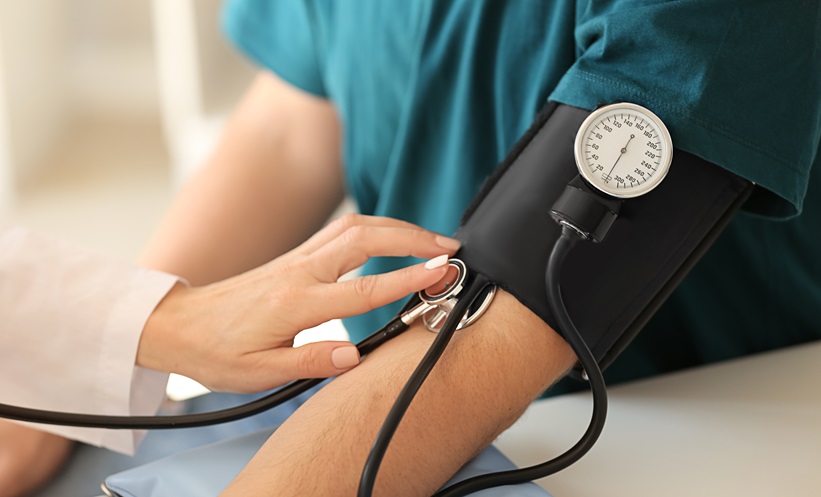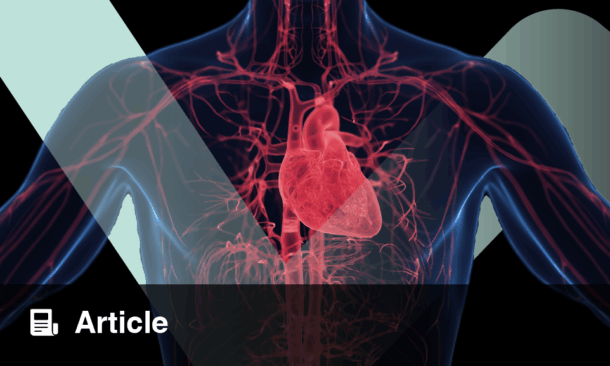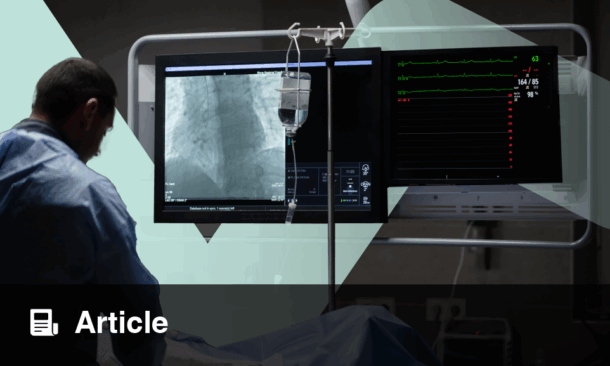Damien Kenny | Consultant Congenital Cardiologist, Children’s Health Ireland at Crumlin, and Mater Hospital, Dublin, Ireland
Citation: EMJ Int Cardiol. 2024;12[1]:51-59. https://doi.org/10.33590/emjintcardiol/GEOM4810.
![]()
What initially led you to pursue a career in interventional cardiology?
I was doing general paediatrics for a while, and was just not motivated by it. I found the physiology around cardiology fascinating; congenital heart disease is so varied, so constantly challenging in relation to understanding the physiology, and I think working with children is very rewarding. The nice aspect of an interventional subspecialty is that it allows you to be able to fix stuff, and I like the concept of providing alternative therapies to surgery. I think the fact that we can do things without the trauma of opening somebody’s chest, and stopping their heart, was very attractive to me. In a field that is quite wide and varied, it provided that extra piece for me to be able to care for these kids, and to be able to provide a definitive therapy for them.
I think it is an evolving specialty as well; it is growing all the time. There is a general push towards trying to do things less invasively, so patients recover more quickly. Particularly for kids, let’s say you are doing an atrial septal defect (ASD) closure, and they have their procedure, they wake up afterwards, they are back up in the ward, home that evening or the next day, and back to their normal activities without too much stress or trauma. I think that was one of the really attractive aspects of it. Then once you start, you get hooked because of the evolution and the growth in this field, and the people that work in it. It is a really nice group of people internationally to be involved with. We have common goals, we work well together; there is a real commitment from industry and academic institutions to try and collaborate, and to try and achieve the goals. So, for all those reasons, I think it is a great specialty to work in, and I have been very lucky to partake in it.
Please elaborate on your recent collaboration with the University of Bristol, UK, and Rush University Medical Centre, Chicago, Illinois, USA, developing a tissue-engineered valve mounted on a bioresorbable scaffold? What are the key takeaway messages from this research?
I went to the USA in 2010, and we had an animal facility there, so it gave me the opportunity to work in a preclinical lab, which was exciting. My mentor that I worked with in Chicago was very supportive of us getting involved in some cutting-edge work. We had a surgeon, Massimo Caputo, who came to join us from Bristol, and we developed a collaboration in that setting. Massimo was interested in providing a more definitive therapeutic solution for kids who needed valve surgery; because if you are 2 years old and need a valve, then by the time you are 10, you have probably grown out of the valve. Whereas, if we could develop a valve to implant minimally invasively into a child, that would integrate or grow with the child, we would have really solved a significant problem that we face in congenital heart disease. So, we created this collaboration between the academic institutions. We had a very visionary charity, called A Giving Heart Foundation, that helped us and supported the work through charitable funds. It was all of these things, and a healthy collaboration between myself and Massimo, that facilitated conceptually the design of a valve, and how we would bring it forward.
We used a made by a company called ELLA-CS (Hradec Králové, Czechia), designed for oesophageal strictures. They were happy enough to work with us to develop a polyurethane covering for the scaffold. Then we looked at several different tissue platforms to create the valve leaflets, which we then placed into a porcine model through a subxiphoid approach. That is how it evolved. We then looked at follow-up out to 3 months, and looked at tissue pathology at sacrifice. We found a lot of inflammation precipitated by the bioresorbable scaffolds, and by the leaflets; so, although the leaflets were somewhat functional, they precipitated a quite profound inflammatory response. I think this is one of the challenges we face: how do you mitigate the inflammatory response? This is before we get to the tissue-engineered part of the valve, and looking at what cell subtypes are going to be more appropriate for these valve platforms, going from myocardium onto valve, and then onto an endovascular surface. These are the sort of challenges that we were facing, from three different sorts of tissue planes on one of these valve platforms.
What we have learned is that it is very valid work, and it is not easy, but we need to continue to pursue it. I suppose there is not as much interest from the large valve companies to do this for transcatheter aortic valve implantation, or for aortic valve replacement, because those patients are older, and maybe one or two valves will last them for the rest of their life, as they are fully grown. It is unique to younger patients and children, and I think there are three parts to it. There is the bioresorbable scaffold; there is the optimum tissue substrate to use; and then the third part is, what is the optimum tissue-engineered cell type, or cell types, to be able to seed appropriately onto the tissue platform that you have used, so that it will integrate appropriately into that child, and grow with that patient? Probably what we learned was that it is certainly not as simple as it looks on the slide, but it is valid and worthwhile to pursue.
In 2018, you issued a warning about the need for further funding and resources at the Mater Hospital Adult Congenital Unit in Dublin, Ireland. Do you feel there are any unmet needs in awareness and service provisions for adult congenital care, and if so, how do you feel we can bridge this gap?
This is a great question, and probably one of the things I am most passionate about; and most frustrated by. Our services on the paediatric side are well supported and developed, although that has taken time to come to fruition. What we had not realised is that, by doing such a good job on the paediatric side, most of these children are now surviving to adulthood, and they become adults with their own challenges, and needs that really are not adequately addressed by the paediatric service. The service in the Mater (Adult) Hospital has evolved haphazardly. Having said that, I still think we provide a good service, but the service is chronically underfunded. There is a tsunami of patients; we have 300–400 patients graduating from the paediatric service every year into the adult congenital service, with no funding to support those patients coming through. Apart from the numbers, the pathologies are becoming more and more complex. I feel often quite sad by the fact that these terribly brave individuals have faced adversity to a level we will never understand through their childhood, and then they get catapulted out into an adult service that is just not in any way developed, or supported enough, to meet their needs.
A lot of these patients have psychological issues, because if they are born with a single ventricle physiology, they realise that their lifespan may be limited in relation to some of their friends. They are being treated somewhat differently; they have multiple admissions into hospital, whilst their friends are going to parties. We do not have the support services to help address their needs, predominately their psychological needs. It is a very sad situation, and we have made multiple attempts to try and highlight this. Unfortunately, the healthcare system where I work is predominantly driven by crisis management. Unless you are able to amplify the appropriate message, with the appropriate number of people, at the appropriate time, it is very unlikely, while you have many other services shouting about their deficiencies, that you are going to get heard. I am not saying that we are more important than any other groups of patients, but I do think it is tragic, and it really saddens me that this group of patients does not get the resources that they need.
Most of the services in the UK have four full-time equivalent consultant cardiologists to deliver care in similar sized units. Meanwhile, we have somewhere between 1.3–1.7 full-time equivalent consultant staff, dealing with a significant population that is growing, and no plans to change that. I think often, in the adult hospital, we are seen as a group that are an annoyance, rather than a group that are contributing, because we are seen as an appendage of a paediatric service that is placed in the adult hospital; but a 25-year-old who has a serious congenital heart defect is really a valid patient in that service. Again, I just think that is not right. If you gave me one thing, on a wish list, it would be a psychologist to help these patients understand their condition, and help them develop techniques to deal with the challenges they face; because I am not qualified to do that. We just do not have the resources to be able to help these young adults.
Having published over 140 peer reviewed articles, and co-authored 20 chapters in international textbooks, what topics in interventional cardiology do you feel merit greater research attention?
One of the things that I am very conscious of is the footprint we leave on the heart. Surgery leaves scar on the heart, which will have implications for the future. It is a very successful process, but we may only see potentially negative consequences in later life. So, we think by doing things less invasively, the footprint we leave is less than surgery; but when we put big metal devices in the heart, they also stay forever. Now, they are effective, but what implications will they have for 50-, 60-, and 70-year-olds? We need to provide the least invasive interventions that have the lowest long-term footprint on the heart; because ultimately, interventions at a young age probably have implications in the future, be that an arrhythmia, be that scar, or be that scar and arrhythmia. Even with the simple things, like closing off a hole between the top collecting chambers of the heart, we may need to try and get back into the left side of the heart when that patient is older. To do this we will need to cross the wall we have ‘fixed’, which is now complicated by having a large metal device there.
We are therefore pushing for the development of bioresorbable devices, the development of tissue-engineered solutions, and aspiring to provide more precise and personalised therapies for kids, so that the anatomical variances that exist are not just homogenously treated with a single device. We should consider potentially 3D printing a bespoke model, stent, or device for a patient, so that they get a personalised, precise therapy for their defect; but there are huge regulatory issues around that. I think there are challenges with funding, because there simply are not the same number of patients, and probably not the same financial recompense for industry, for our group as there would be with large-volume interventions, such as coronary artery stenting, or a transcatheter aortic valve replacement in adults. So, these are the challenges we are going to face.
I do think these goals are achievable. We have a very motivated group of people working in the field, and there are several people out there in industry who are inspired by the work we do, who realise that the innovative nature of our work has often provided a platform for the development of other devices that have had a wider and broader remit. This means that there is a potential to recoup some of the costs that maybe go into the original devices. For example, the first transcatheter valve implant, which has now been done many millions of times around the world, was performed in a 12-year-old patient in the pulmonary side by a congenital cardiologist in September 2000. This was 2 years before the first transcatheter aortic valve implantation was done, which is now a multibillion dollar industry. So, there is value in the innovative nature of the challenges we face, and the skills learned are transferrable beyond the actual specialty.
As Director of the Paediatric and Adult Interventional Cardiac Symposium (PICS/AICS), what has been your proudest achievement in this role to date?
I am very fortunate; as my mentor Ziyad Hijazi was the one who established this, I got involved in 2010, when I went to work with him. He is very generous, and let me get involved in a more meaningful way. PICS/AICS is the largest symposium dedicated purely to the interventional therapy of congenital heart defects, and we normally have up to 1,000 delegates attend each year, from over 60 countries. We do live cases, from usually nine or 10 sites, for each meeting, and I think it has provided different benefits. Firstly, it has provided a good educational platform for people to learn, not only through didactic means, but also by seeing these cases live. The live cases are challenging to put together, and there is a huge onus to make sure that these are carried out appropriately and safely, that what we are showing is relevant to the audience, and that the operators are comfortable with what they are doing in a stressful environment, with people watching. We work closely with the U.S. Food and Drug Administration (FDA) in this regard.
There is also the networking aspect of the meeting, which has provided a platform for us to share ideas about different complex diagnostic or therapeutic issues that exist. I think one of the tragedies of the COVID-19 pandemic is that, although we had an online or hybrid meeting, it took away that ability to sit in a room with somebody and just problem-solve.
The third piece is allowing us to interact with industry. As much as we may not like to admit it, we cannot survive without the support and input of our colleagues from industry; and so, the meeting has provided us the opportunity to have discussions about what we need, and how we can make devices better, and for that group of people to listen to us. That has been a fascinating part for me, the opportunity to travel all over the world, meet different people, and learn from them. I think the more you see, the more you travel, the more you learn, you will ultimately be better at what you do. Due to the success of the Symposium, we have now established a society, called the PICS Society, to provide a home for congenital interventional cardiologists all over the world. With this we can advocate for our patient group, develop guidelines and educational platforms, and have a number of different subcommittees that will actually look at the needs of our members and the patients we treat.
This has been going for several years now, and we have had a couple of guideline documents either published or being developed. We have a Congenital Heart Academy, starting soon, where we’re taking 25 young interventional cardiologists in our field through a 2-year training module to expose them to all the technical, psychological, and emotional challenges of dealing with our specialty; and I think that is very exciting as well. There are many new challenges and opportunities that have evolved out of having the PICS Symposium, which have now extended beyond just a meeting or educational platform. I think this has been great for our specialty.
Could you please elaborate on the Congenital Heart Academy? For the upcoming Symposium, can you also give us an insight into any research, or initiatives, that you are planning to implement?
The Academy is just about to start. We had over 100 applicants for 25 spots. I suppose it does not sound like a lot, but we are a small field, and so sometimes the success of the society provides its own challenges. How do we decide which 25 are more worthy of the first tranche of places for the 2-year cycle? When we were doing it, we were keen to not just focus on how to close an ASD, but on how to deal with the complications of an ASD, how to run a team, how to focus on delivering care in difficult situations, and how to discuss some of the emotional challenges that exist with conflict. So, we have tried to expand it beyond just the technical sides of the specialty. One of the other things that we have established is an online communication platform, through a company called , San Francisco, California, USA, which allows us to share clinical problems across over 500 members of the society. Members can post a clinical problem in a very secure format, share images of a particular lesion, and ask opinions from interventionalists and colleagues from all over the world. I think that has been a huge addition.
In relation to the Symposium, we had a meeting in Istanbul, Türkiye, in April of this year. It was the second time we have run this, because we were conscious that we were USA-based and, as a society, we want to have a more international reach. I think some interventionalists, particularly from Asia and the Middle East, cannot travel to the USA, so we wanted to provide a regional PICS experience. So, that meeting, as I said, ran its second iteration this April, with live cases from several different local and regional sites. We looked at some of the challenges that are specific to that part of the world, and how can we learn from people in low- and middle-income countries who are performing these interventions on a shoestring budget; and how can we contribute to helping them evolve and improve. This brings learning to both sides.
And then, in relation to the Symposium in San Diego this September, again, we have live cases, and a number of different topics that we are looking at. For instance, how is advanced imaging helping us to make better decisions on delivering better care? How are alternative platforms like interventional cardiac MRI helping us avoid radiation exposure, and how are newer devices allowing us to intervene on smaller and younger patients, premature babies that historically were deemed too small for interventions? How can we evolve collectively to allow us to overcome ongoing challenges, and provide a platform for us to have discussions with our colleagues from industry, to see how we can work together to face future challenges?
What motivated you to co-found the Congenital Heart Intervention and Mission Support (CHIMS), an organisation committed to centralising and redistributing donated catheterisation equipment to developing countries? What changes have you seen implemented because of CHIMS since its formation?
When I was in the USA, one of the things that became evident was that there was a resource and a need, and they were not aligning. We also realised that there were several catheter laboratories across North America that were throwing out expired equipment that could be valuable to other areas of the world. The concept of trying to bring those all together into a central repository, providing an online platform for people who are going on charity missions to request specific pieces of equipment, and then for us to ship that equipment to them, was an unmet clinical need. That was where it started from.
We initially partnered with the International Children’s Heart Foundation in Memphis, Tennessee, USA, and had good success. One of the things that I would like to do is bring in the PICS society as we evolve and grow. Having an international central repository, with online support, can allow people doing interventions in countries without the resources they need, to get online and request what they need from someone who has it. I think we need to broaden our thought processes around how achievable this is, and, in this small global world that we have, that is really where we would like to get with it. We have supported several missions, but I do not think it has taken off to the extent that I would like to have seen as yet. I am very committed to trying to, because when you look back on your career, and you think “I’ve closed ‘x’ amount of holes,” or “I’ve done this,” it is ultimately the infrastructure you leave behind, and the people you train, that are the most important things that you’ll achieve throughout your career. So, that is something that I would like to see through to the end.
For the next few years, what are the specific targets you have for CHIMS?
I would like to see a dedicated funded repository in at least North America and Europe. I would also like to see a well-developed online platform, through the PICS Society, to allow people to request online for specific pieces of equipment that may be present in a repository. Then, I would like to have a seamless process, whereby that piece of equipment could be shipped free of charge, to that particular institution, to be able to deliver that therapy. And then finally, collect information around how effective the service was in meeting the needs, so that have a feedback loop in relation to the service itself.
Some of that is going to require some degree of funding, and we have had several volunteers. Kathleen Nolan, who is one of my nursing colleagues in the USA, has been amazing in supporting and keeping this afloat in the USA, and we will continue to need people who commit to that. Because of the nature of the work we do, I think there is great commitment and understanding of those less fortunate; to the point that most of us would have done charity missions somewhere in the world, despite busy clinical schedules in our own environments. Therefore, it is just about having better organisational skills to put it all together, so that it runs seamlessly. It just needs a bit more time, and funding, to be able to get to that point; but I do not see it as insurmountable because there is good will, and I think it is worthy and valid. It is doable.
You recently co-authored the paper ‘Current status of transcatheter intervention for complex right ventricular outflow tract abnormalities.’ What were the key learning points from this article, and how do these findings contribute to the existing literature of valve therapy?
The right side of the heart is often seen as more relevant to congenital heart disease, whereas the left side of the heart is often seen as an acquired or structural problem. I do not think that is necessarily true; but we have an interest in the right ventricular outflow tract disease, because we see a lot of it in patients with congenital heart disease, and I think adult cardiologists who are dealing with acquired structural heart disease do not see that much of it.
Because I have a practice that goes from very young patients to very old patients through the adult congenital services, it is understanding the downstream effect on patients as they get older, and having that 360 degree view of the lifetime management of right ventricular outflow tract disease is important. Yes, we can deal with obstructions to outflow in young babies now by putting stents in, but what implications does that have for the following surgery that may be inevitable, or the next transcatheter intervention that may be available, if that stent does not grow with the patient? And now we have a problem that we have created rather than solved. Even if they have surgery, what can we do, surgically, to promote longevity for that patient, in relation to their right ventricular outflow tract? How can we facilitate a less invasive therapy for that right ventricular outflow tract when it ultimately becomes dysfunctional? How can we join up our thinking in relation to the intervention, and hear how that impacts upon the next intervention? And how do we, as surgeons, interventionists, cardiologists, come together to say: “How do we map out this patient’s therapies over the course of their life? How do we make a decision that is going to be good, not only at this point in time, but also as they get older, so that we give them the best personalised, precise therapy for their particular type of condition, with the best physiological and anatomical outcome?” This then provides the best long-term survival for them, with the least amount of interventions.
We started off looking after babies and young children, and did not think: “What is this going to mean when they are 30-, 40-, and 50 years old?” We were thinking to just get on with the intervention. We are now seeing that what we have created here are implications for when they are older. So, we may need to modify our therapy, so that they get better long-term outcomes. I think that is really going to be a challenge for us, and the reason this hasn’t been part of our psyche to date is that we are only learning now that these patients are surviving longer into adulthood, and hoping for a normal life expectancy and quality of life. Therefore, our initial interventions should not only provide immediate, effective results, but longer-term sustained benefits as well.
Are there any notable innovations on the horizon of the field of interventional cardiology that are of particular interest to you?
Again, the most exciting prospect is personalised medicine through 3D-printed bespoke devices for a specific anatomical lesion, optimising lifetime management, and ensuring that we have a broader viewpoint on the therapies that we deliver. I think that feeds into some of the first three points that I have previously mentioned. I think greater collaboration between surgeons and interventionists that does not become ego-driven is key; it is all about the job we do collectively, to deliver the best outcomes that we can. You have to invest in bringing people together, you have to get them to communicate and share problems; if we are only ever talking to each other, we are only going to be limited in the solutions that we come up with. When we run the PICS Symposium, we always invite surgeons to our meeting, giving a counter argument to our confirmation bias. It is very refreshing, because in a clinical setting, when we sit around to try and figure out solutions for patients, there is always a wide spectrum of disciplines within the room: surgery, non-invasive and invasive cardiology, and so on. Ultimately, when we are sitting in meetings, we should be trying to mimic that as much as we can.
The last piece is getting good data; data is so important. Historically, we have struggled, because we have a heterogeneous group of patients, and a heterogeneous group of lesions. It is hard to get large datasets on small numbers of disease entities like adult cardiology. That is why international registries are so vital, and dealing with particularly when you have different rules in North America and Europe, can be challenging, but again, not insurmountable. I think we will only learn by collecting data, reviewing that data, and saying: “Okay, maybe there’s a different way we should be looking at this.”







